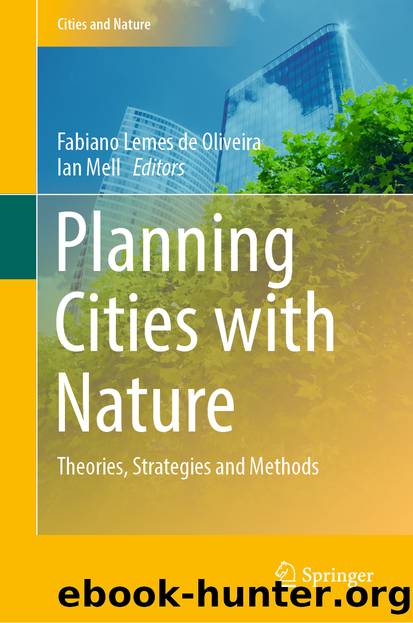Planning Cities with Nature by Unknown

Author:Unknown
Language: eng
Format: epub
ISBN: 9783030018665
Publisher: Springer International Publishing
10.5 Discussion and Conclusions
The final section of this chapter is used to identify strands that emerge from the disparate perspectives presented in the previous sections. Although it is difficult to make sense of such a diversity of examples, situations, needs, and cultural contexts, some points of intersection can be seen. The foremost and most obvious one is that urbanization has reached a tipping point. Whether planned or unplanned, the sheer growth and densification of people, buildings and infrastructure deteriorate human conditions. The phenomenon has reached such alarming peaks that even one of the largest cities in the world (i.e., Shanghai) is questioning whether there are limits to urban growth and coining a new term, the big city disease, to express the multiplication of environmental issues triggered by large-scale development (Haas 2017). As urban degradation escalates, nature becomes one of the factors which can restore a balance that at present is lost. Over the history of urbanization, the purpose of urban nature has moved from providing leisure, well-being and sometime subsistence, to one providing resilience at all levels: to climate change, to communities, to ecology and to economy. Although there is recognition that green infrastructure can provide this resilience, green is too often used as an ornament. From a human perspective (the viewpoint of individuals and groups), the right to the green city still stands for the possibility of using green areas to meet their daily needs. However, when we zoom out and consider the processes of urbanization of Rio, or the critical mass reached by urban gardeners in some countries of the global north, we can fully perceive the dangerous acceleration of processes of urban growth, the urgency of providing more efficient solutions to green infrastructure and the insufficient efforts from central authorities to recognize green as a vital right for all.
Another common recurrent strand is participation. Taking people at the center of the decision-making process does not only result in ensuring that interventions implemented are in line with real needs, but it also helps create the necessary dialogue between policy makers and citizens. Participation is a much debated approach to planning and design that has been experimented in many forms by architects and urban designers over decades, spanning from the work of Erskine (e.g., Byker Wall in Newcastle, UK—see Collymore 1994) and De Carlo (Villaggio Matteotti in Terni, Italy—see De Carlo 2007) in 1970s to the more recent experiments of Brillembourg with the Urban Think Tank in Venezuela (McGuirk 2015). In Rio de Janeiro too participatory projects can be observed, including the seminal experience of urbanist Carlos Nelson Ferreira dos Santos in Brás de Pina and more recently, the Participatory Urban Plan elaborated by Luiz Carlos Toledo for the Rocinha Favela, a community with almost 100 thousand inhabitants. These are all examples which refer to residential and non-residential urban development, rather than green infrastructure. Nevertheless, there are lessons that can be learned from them in terms of participation and dialogue between stakeholders. Participation and the co-production of the green
Download
This site does not store any files on its server. We only index and link to content provided by other sites. Please contact the content providers to delete copyright contents if any and email us, we'll remove relevant links or contents immediately.
Kathy Andrews Collection by Kathy Andrews(10616)
The remains of the day by Kazuo Ishiguro(7623)
Spare by Prince Harry The Duke of Sussex(4259)
Paper Towns by Green John(4209)
The Body: A Guide for Occupants by Bill Bryson(3883)
Be in a Treehouse by Pete Nelson(3260)
Harry Potter and the Goblet Of Fire by J.K. Rowling(3152)
Goodbye Paradise(3019)
Never by Ken Follett(2959)
Into Thin Air by Jon Krakauer(2741)
The Remains of the Day by Kazuo Ishiguro(2648)
The Genius of Japanese Carpentry by Azby Brown(2644)
The Cellar by Natasha Preston(2634)
Drawing Shortcuts: Developing Quick Drawing Skills Using Today's Technology by Leggitt Jim(2554)
120 Days of Sodom by Marquis de Sade(2471)
Architecture 101 by Nicole Bridge(2375)
Machine Learning at Scale with H2O by Gregory Keys | David Whiting(2373)
The Man Who Died Twice by Richard Osman(2352)
Industrial Automation from Scratch: A hands-on guide to using sensors, actuators, PLCs, HMIs, and SCADA to automate industrial processes by Olushola Akande(2336)
